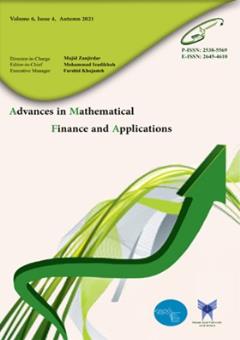-
-
-
Open Access Article
1 - Presenting the smart pattern of credit risk of the real banks’ customers using machine learning algorithm.
Hojjat Tajik Ghodratollah Talebnia Hamid Reza Vakili Fard Faegh AhmadiIn the past, deciding over granting loans to bank customers in Iran would be made traditionally and based on personal judgments over the risk of repayment. However, increase in demands on banking facilities by economic enterprises and families on the one side, and incre MoreIn the past, deciding over granting loans to bank customers in Iran would be made traditionally and based on personal judgments over the risk of repayment. However, increase in demands on banking facilities by economic enterprises and families on the one side, and increased as well as extended commercial competitions among banks and financial and credit institutions in the country for reduction of facility repayment risk on the other side, have caused application of novel methods such as some statistical ones in this context. Now to predict the risk of negligence in banking facility repayment and classification of the candidates, bankers use their customers’ credit ranking. Time efficiency, cost effectiveness, avoidance from personal judgments, and further accuracy in examining the candidates who apply for various funds are of its salient merits of this new combined method. Various statistical methods including biased analysis, logistic regression, non-parametric parallelism, and also some others such as neural networks have been employed for credit ranking. In this research, given the random forest metaheuristic algorithm-based smart pattern of real bank customers’ credit risk (case study: Bank Tejarat) was presented. According to the value of skewness, the data could be stated to have a normal distribution. Based on the observed results, the lowest mean was related to the variable of type of facility and its maximum value, to the amount of facility. Manuscript profile -
Open Access Article
2 - Modeling Energy and Steel Price Volatility and Experimental Test of Inter-Market Volatility Spillover: A Multivariate Study Using VECM and Familty GARCH Models
Seyed Abdolhamid Bahreini Hossein Badiei Faegh Ahmadi Jahanbakhsh AsadniaThe spread of volatility between financial indices indicates the process of information transfer between markets. Despite the relationship between financial markets, the information created in one market can affect other markets as well. Therefore, the main purpose of t MoreThe spread of volatility between financial indices indicates the process of information transfer between markets. Despite the relationship between financial markets, the information created in one market can affect other markets as well. Therefore, the main purpose of this study is to investigate the volatility of energy and steel prices and the experimental test of inter-market volatility spillover. To do this, the monthly data of steel and energy price (oil and gas) during 2009 to 2019 were collected from valid databank using VECM and GARCH Family and VAR model and ICSS algorithm were analyzed by considering and without considering structural failure.Then, the causal relationship between them is examined through Granger causality test. The results show that there is volatility in the energy market (oil and gas) as well as the steel market during the studied time period. Results also show that the price of steel as well as its return and index are changed significantly by energy price effect. However, there is a causal link between energy prices and steel products and these results are consistent with the theoretical basics of the study and review of literature. Manuscript profile -
Open Access Article
3 - A Study of the Effective Factors on Error of Forecasting Technical Analysis Indicators in Iran Stock Exchange (NNARX Approach)
Hamed Tavakolipour Faegh Ahmadi Bizhan Abedini Mohammad Hossein RanjbarIt is well documented that using linear models to forecast plenty of financial observations due to their nonlinearity is not satisfactory. Therefore, in this paper, the technical analysis indicators are forecasted using Neural Network Auto-Regressive model with eXogenou MoreIt is well documented that using linear models to forecast plenty of financial observations due to their nonlinearity is not satisfactory. Therefore, in this paper, the technical analysis indicators are forecasted using Neural Network Auto-Regressive model with eXogenous inputs (NNARX). Then the effect of different factors (economic, systematic risk, company's properties and corporate governance) on their forecasting error (eRSI, eMA1, eMA2 and eMACD) was investigated. For this purpose, required data were collected using the removal sampling method for 323 companies listed on the Tehran Stock Exchange from 2014-2020. In addition, the mean absolute percentage error (MAPE) was applied to measure the error of forecasting technical analysis indicators. NNARX and dynamic panel data models (GMM) were used to study the effective factors on the error of forecasting technical analysis indicators. Results indicated that the error of forecasting technical analysis indicators is less than 0.1 and has sound accuracy. Also, the company's size and corporate governance indicators didn't significantly affect the error of forecasting technical analysis indicators. In addition, financial leverage doesn't significantly affect eRSI and eMACD but has a significant inverse effect on eMA1 and eMA2. On the other hand, return on assets has a significant inverse effect on eRSI, eMA1, eMA2 and eMACD. Also, economic recession and prosperity, inflation fluctuations, exchange rate fluctuations and systemic risk have a significant positive effect on eRSI, eMA1, eMA2 and eMACD. Manuscript profile
List of Articles faegh ahmadi
-
The rights to this website are owned by the Raimag Press Management System.
Copyright © 2021-2024


